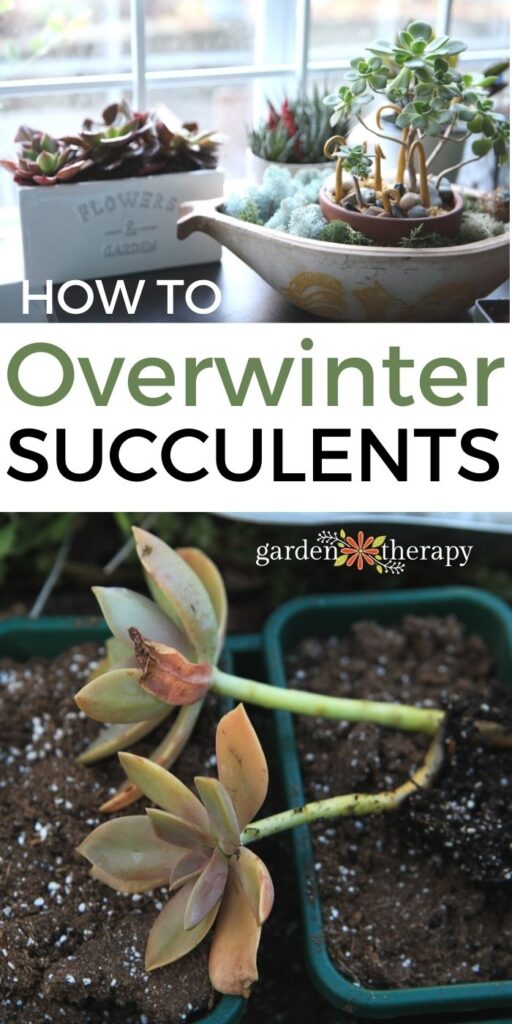Succulents are typically thought of as a plant that thrives in warm temperatures. However, with a little extra care, succulents in winter can do just as well! Here’s how to overwinter succulents and keep them thriving all year long.
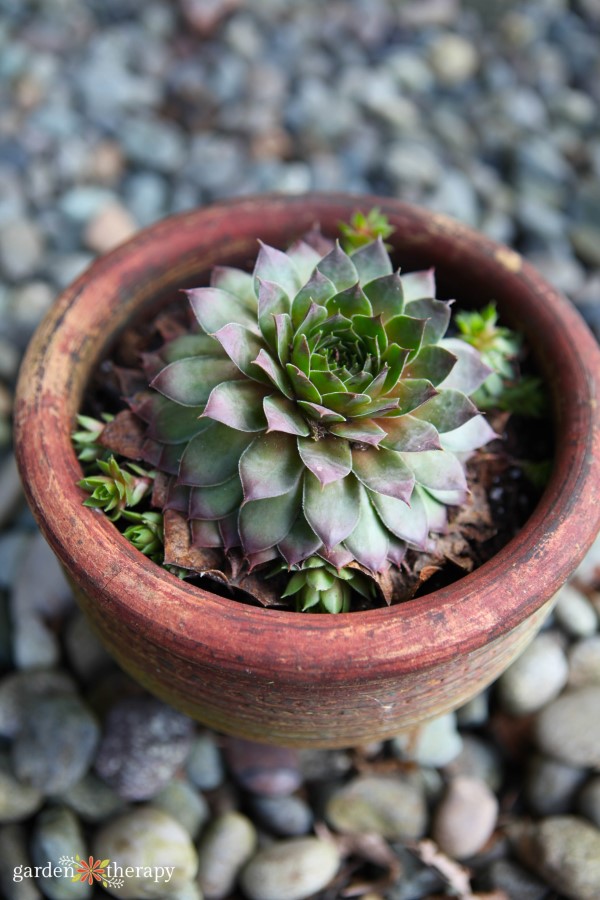
With succulents at the height of popularity, there is now a great variety of interesting new plants available for the home garden. There are so many beautiful and decorative specimens that you very well may have collected some succulents that you would like to grow for years to come.
Some succulents are alright to remain outside, while others benefit from being brought inside. Don’t worry, I’ll break it all down!
This is how I overwinter succulents, both hardy and tender, so that they continue to thrive in my garden.
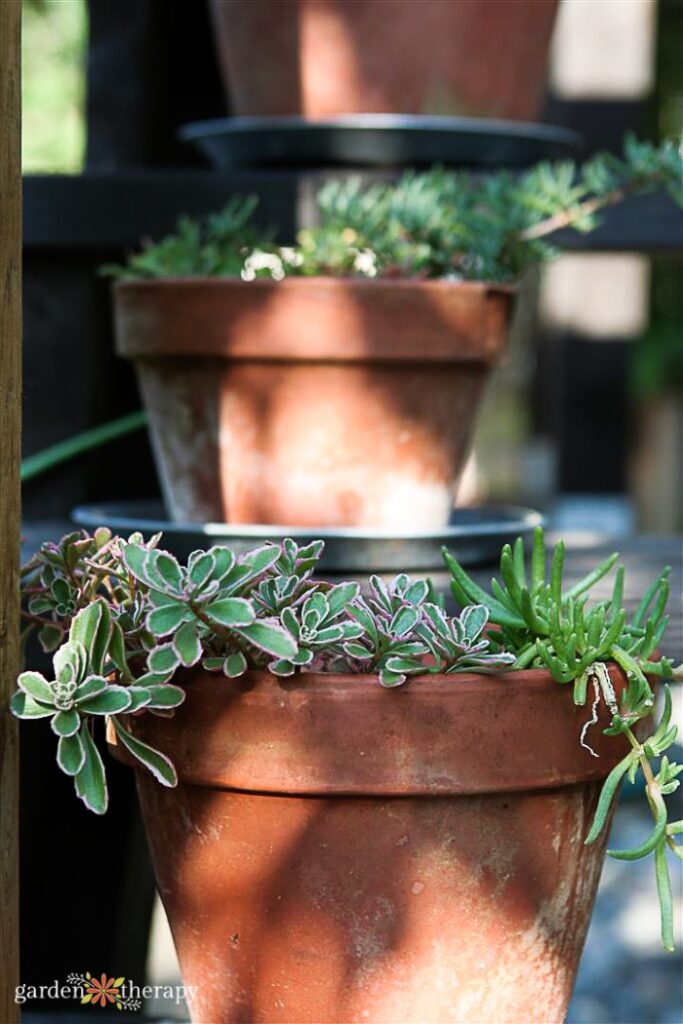

What is a Succulent?
A succulent is a fleshy-leafed plant that is tolerant of drought due to the retention of extra water in the leaves or stems. Succulent plant varieties include:
- Sedum
- Sempervivum
- Echeveria
- Aeonium
- Crassula
- Aloe
- Haworthia
- Cacti
In general, the term “succulents” is used to categorize plants that have fleshy parts and a similar need for some water, bright light, and a tolerance of drought. While there are about 60 families of plants that fall into the category, not all plants in all of those 60 families are succulents.
As you can imagine, it’s difficult to have a care standard for “succulents” as there is a wide range of plants that fall into the category.
Three Catagories of Succulents
That being said, I tend to separate them into three categories and use those guidelines to care for my plants. This allows me to know how to overwinter them too. The three categories I use are:
- cacti
- hardy succulents
- tender succulents
Personally, I don’t grow any cacti outdoors—I certainly don’t have the right climate for it! So, in this post, I will focus on caring for succulents in winter that are hardy and tender.


How to Overwinter Hardy Succulents Outside
Before getting started with overwintering, I clean up my plants and transplant the pups or offshoots into their own containers. If I have tall or spindly succulents that I don’t love the look of, I remove the tops and transplant them.
Some winter-hardy varieties don’t need much special care. In fact, some succulents love a cold period, which helps them thrive for the rest of the year.
Winter-hardy succulents like many Sedum, Sempervivum, Agave, Ice Plant, Lewisa, and Yucca will overwinter well up to Zone 5-6 and higher. Again, this is a generalization, and many of the varietals in each family will have more or less cold-hardiness.
If these hardy succulents are planted in the garden, I generally leave them over winter and just clean up the brown leaves or transplant them in the spring.
If they are in containers, I move the containers under cover. Simply placing the pots under a bench, deck, or eaves near the house saves both the pots and the succulents some wear and tear.
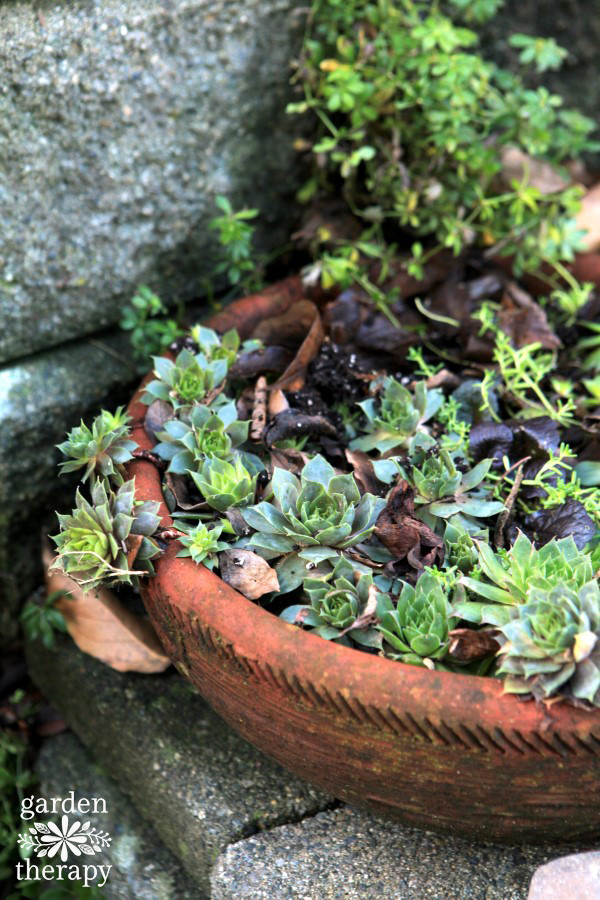

How to Overwinter Tender Succulents Indoors
Tender succulents in winter such as Aeonium, Echeveria, and Crassula will need a bit more hands-on care during the temperature drops. However, it is worth doing what you can to protect them. These are beautifully decorative succulents and they can add a lot of wow-factor to next year’s containers and projects.
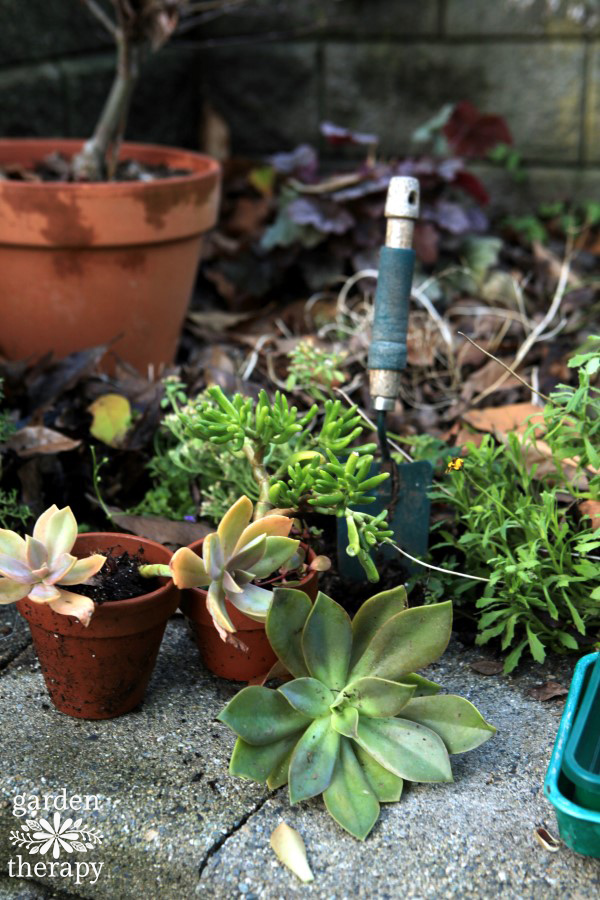

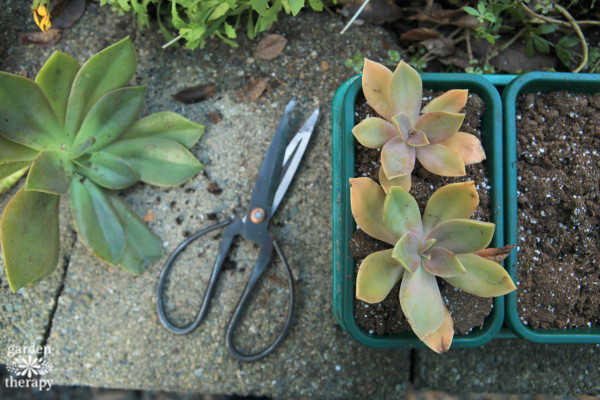

Just as I do with the hardy succulents, I clean up the plant as much as possible and transplant any offshoots. It’s not worth saving a plant that is looking a bit rough around the edges or one that has disease and pest problems. Just add them to your compost bin and focus on the healthy plants.
If your plant is a little bit overgrown, then it might be worth taking some cuttings and propagating those for new, young plants next spring.
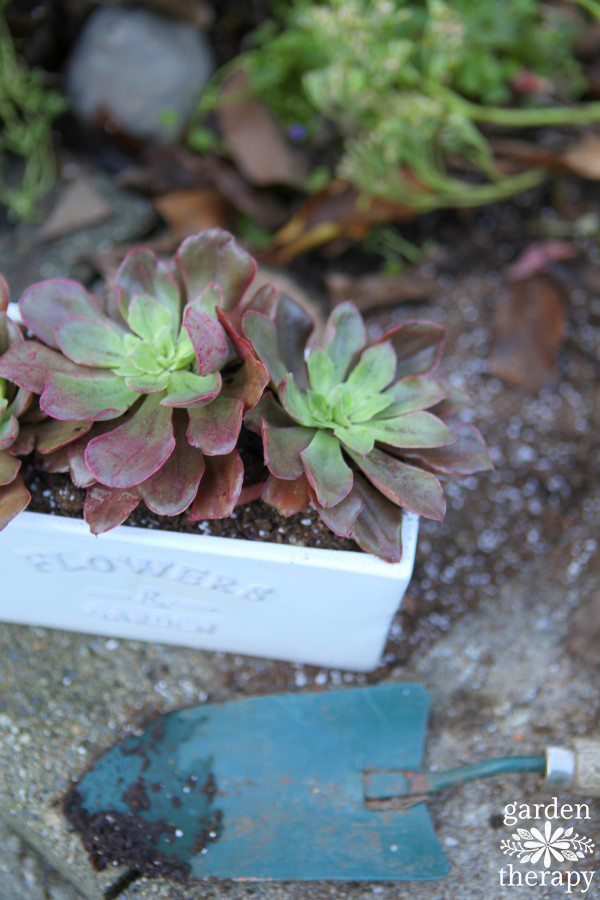

The Best Soil for Succulents
Replace the soil by removing the plant from the pot, shaking off any soil from the roots and replanting the succulent into a sterile cactus & succulent mix. This will keep the critters that are in the soil from overwintering along with your succulents.
You can find my homemade succulent soil mix here. It’s easy to make and works very well!


Location Needs: Temperature, Light, and Humidity
Move the plants indoors into a cool location like a garage or basement that gets at least a couple of hours of light per day. When the succulents go dormant in the winter, they don’t need 8 hours of bright sunlight (but if you keep them indoors where it’s quite warm, then they will need sunlight because they won’t be able to go dormant).
Keep the succulents in a location that gets enough heat to dry out the air. In areas that get quite a bit of moisture in the winter (like where I live in Vancouver), I find that an unheated garage or cold space in a basement can have too much moisture and cause the succulents to mould.
I set my succulents on a north-facing window in a heated garage that I keep much cooler than the house and they are happy as can be.


Watering Needs
When tender succulents have gone dormant for the winter they don’t need as much water. You can give them some water every 1 to 2 months and allow the soil to dry out between watering. The soil shouldn’t be soggy or else it will promote rot.
With these tips, both hardy and tender succulents will have a nice winter’s rest. In the spring, when the temperature warms up, they may look a little bit scraggly. Pop them outside again, pull off any brown leaves, and place them out in the garden. In no time, your succulents will be bright and beautiful again. Let’s hope they even multiply!
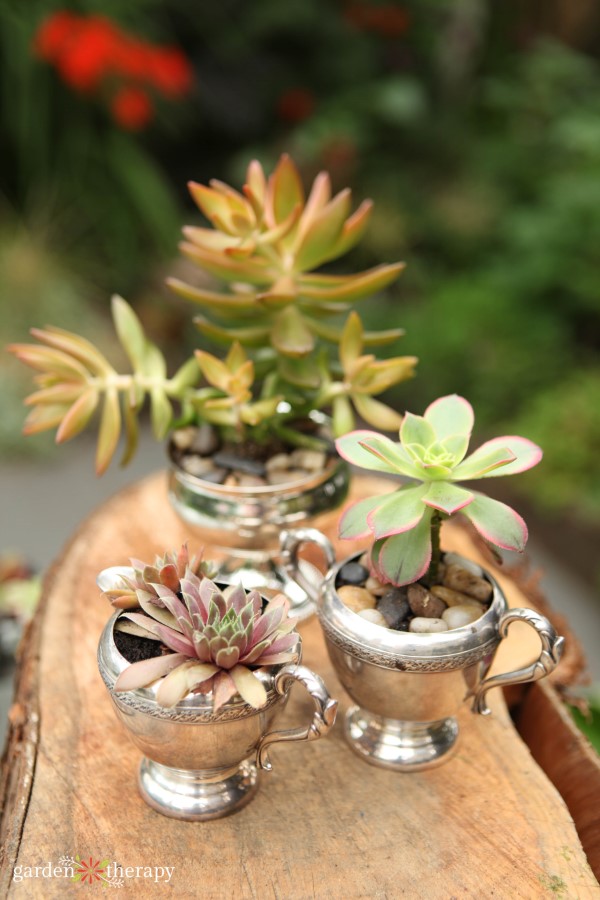

FAQ About Succulents in Winter
No. Your succulents (and most houseplants) go into dormancy during the winter, and they won’t require any fertilizer since they’re not in an active growth period. This is also why they require minimal sunlight and water during this time.
It depends on where you live, but the garage could be the ideal place for your succulents. If it’s cold, you can move your hardy succulents in pots into the garage, and they’ll be protected quite well.
My tender succulents are in a north-facing window in my garage studio below the ground line, and they go semi-dormant in the winter. It gets quite chilly in there. Once I move them back outside for the spring, they perk right back up. However, if your garage gets super cold, it might be too cold for your tender succulents.
It’s very difficult for succulents to get enough sunlight indoors. I prefer to put my succulents in an area where they get only a few hours of sunshine a day, and it’s cold. This forces them into dormancy.
If it’s warm, they won’t go dormant and will require the usual 8 hours of sunlight. So, if this is the case, you want to put them in a south-facing window with as much sunlight as possible in the winter. They’ll probably get leggy but should perk back up in the spring.


More Tips for Growing Succulents


